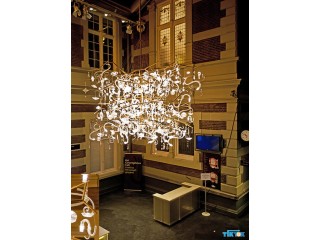Common Types of Electrical Wire Used in the Home Private
2 years ago - Multimedia - San Antonio - 51 views -Knowing the basic electric wire types is essential to almost any electrical project around the house. When you're installing new wiring, for example, choosing the right wire or power cable is half the battle. And when you’re examining existing wiring in your home, identifying the wire type can tell you a lot about the circuit the wiring belongs to—for example, when you open a junction box and need to determine which wires go where. Wiring for modern homes is quite standard, and most homes built after the mid-1960s have similar types of wiring. Any new electrical installation requires new wiring that conforms to local building codes.
Here are some common types of home electrical wire.
Wiring Terminology
It helps to understand a few basic terms used to describe wiring. An electrical wire is a type of conductor, which is a material that conducts electricity. In the case of household wiring, the conductor itself is usually copper or aluminum (or copper-sheathed aluminum) and is either a solid metal conductor or stranded wire. Most wires in a home are insulated, meaning they are wrapped in a nonconductive plastic coating. One notable exception is ground wires, which are typically solid copper and are either insulated with green sheathing or uninsulated (bare).
The most common type of wiring in modern homes is in the form of nonmetallic (NM) cable, which consists of two or more individual wires wrapped inside a protective plastic sheathing. NM cable usually contains one or more “hot” (current-carrying) wires, a neutral wire, and a ground wire.
As an alternative to NM cable, individual wires can be installed inside of a rigid or flexible metal or plastic tubing called conduit. Conduit is typically used where the wiring will be exposed and not hidden inside walls, floors, or ceilings.
These larger wires in your home are carrying 120- to 240-volt circuit voltage, often referred to as line voltage, and they can be very dangerous to touch. There are also several wires in your home that carry much lesser amounts of "low-voltage" current. These are less dangerous, and with some, the voltage carried is so low that there is virtually no chance of shock. However, until you know exactly what kind of wires you are dealing with, it's best to treat them all as dangerous.
NM Cable
Often called “Romex” after one popular brand name, NM cable is a type of circuit wiring designed for interior use in dry locations. Most NM cables have a flattened tubular shape and run invisibly through the walls, ceiling, and floor cavities of your home. Almost all of the wiring in outlets and light fixtures a modern home is NM cable. The most common sizes and their amperage (amp) ratings are:
14-gauge (15-amp circuits)
12-gauge (20-amp circuits)
10-gauge (30-amp circuits)
8-gauge (40-amp circuits)
6-gauge (55-amp circuits)



















